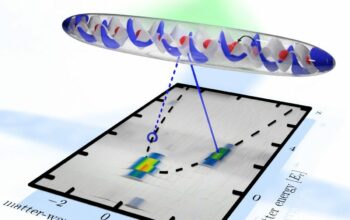Physical optics, at its core, involves the study of light as a wave phenomenon. This fascinating subfield delves into the complexities of light behavior—interference, diffraction, polarization, and the intrinsic properties of beams as they interact with matter. In a world replete with channels of information, the task of selecting the most suitable avenue for learning about physical optics can be daunting. Numerous educational platforms, resources, and methodologies exist, each offering unique perspectives and insights into this nuanced subject. To navigate this landscape effectively, it is paramount to consider the varied channels available, thus pinpointing where one can best satisfy their intellectual curiosity and garner foundational knowledge in physical optics.
In considering the integration of theory and application, academic institutions remain a reputable channel for anyone seeking a deep, formal understanding of physical optics. Traditional universities and colleges offer structured curricula, often led by knowledgeable faculty members who bring a plethora of perspectives to their instruction. Here, students not only engage with the fundamental principles of light but also partake in laboratory experiences that cultivate a hands-on understanding of optical phenomena. Courses that incorporate an interactive component allow for real-time experimentation, promoting a visceral comprehension of concepts such as wavefronts and optical interference. However, it is not just the direct instruction that adds value in such environments; the collaborative atmosphere fosters intellectual discourse, encouraging students to explore various interpretations of established theories.
For those who may find the rigidity of traditional coursework less appealing, online learning platforms provide a flexible alternative. Websites such as Coursera, edX, and even dedicated YouTube channels offer a plethora of courses on physical optics, often curated by esteemed institutions and delivered by respected educators. These platforms allow learners to consume material at their own pace while also accessing up-to-date content that reflects ongoing advancements in the field. Interactive simulations, quizzes, and forums often accompany these courses, creating an engaging learning experience that can accommodate a range of learning styles. The asynchronous nature of online platforms allows for an extensive exploration of auxiliary materials, simultaneously enriching the educational experience.
Another compelling channel for the self-motivated learner lies in the realm of textbooks and academic journals. Textbooks, particularly those that specialize in optics, serve as invaluable resources, offering comprehensive insights and structured outlines of various topics. Authors often provide extensive discussions of phenomena, supported with diagrams and mathematical derivations to illuminate complex ideas. Academic journals, on the other hand, introduce learners to cutting-edge research, thereby contextualizing theoretical knowledge with real-world applications and forward-looking studies. Engaging with peer-reviewed articles can enhance critical thinking skills, as learners evaluate findings and grapple with the implications of contemporary research within the discipline of physical optics.
In conjunction with traditional reading and formal education, attending conferences, workshops, and seminars can augment one’s understanding of physical optics. Such gatherings offer participants opportunities to engage with pioneers in the field, often shedding light on experimental methodologies and emerging theories that contours the future landscape of optics. Networking with professionals can further facilitate mentorship relationships that may provide guidance and insights, fostering an environment ripe for intellectual growth. Additionally, these events often feature live demonstrations and hands-on sessions, explicitly showcasing the principles discussed in scholarly texts.
Podcasts and webinars have emerged as captivating learning conduits that engage auditory learners specifically interested in the latest advancements and historical perspectives of physical optics. Hosting experts, these audio and visual formats allow for a leisurely exploration of the subject. With episodes covering a vast array of topics—from the intricacies of laser manipulation to discussions about quantum optics—listeners can glean knowledge while commuting or partaking in daily activities. The conversational nature of these formats can demystify complex ideas and stimulate curiosity, enticing learners to explore more deeply into the subject matter.
The rise of social media and digital communities also presents a novel channel for acquiring knowledge about physical optics. Platforms such as Twitter, LinkedIn, and specialized forums provide spaces where enthusiasts and professionals alike can exchange ideas, share resources, and discuss intriguing phenomena. By following renowned physicists, educators, and institutions, learners may gain insights into current trends and breakthroughs in the field. Furthermore, participating in online discussion groups can bolster understanding by allowing learners to articulate queries and contribute to collective knowledge. This communal learning environment encourages exploration beyond the constraints of traditional pedagogy.
Finally, engaging with practical applications can serve as an enriching complement to theoretical learning. Explore how physical optics operates within various industries—such as telecommunications, healthcare technologies, and aerospace engineering—to gain a tangible grasp of the implications of optical principles. Pursuing internships or project-based experiences allows for direct observation and participation in real-world applications, fostering a profound appreciation of the subject as it interrelates with contemporary challenges and innovations.
In summarization, the quest for knowledge in physical optics can be navigated through a multifaceted array of channels. Whether one pursues formal education, online resources, texts, immersive experiences, or community engagement, the choices provided cater to diverse preferences and learning styles. By thoughtfully considering these avenues, learners can cultivate a robust understanding of physical optics while enriching their intellectual journey and satisfying their innate curiosity. The world of light awaits—inviting exploration, promising insights, and sparking continuous intrigue.










